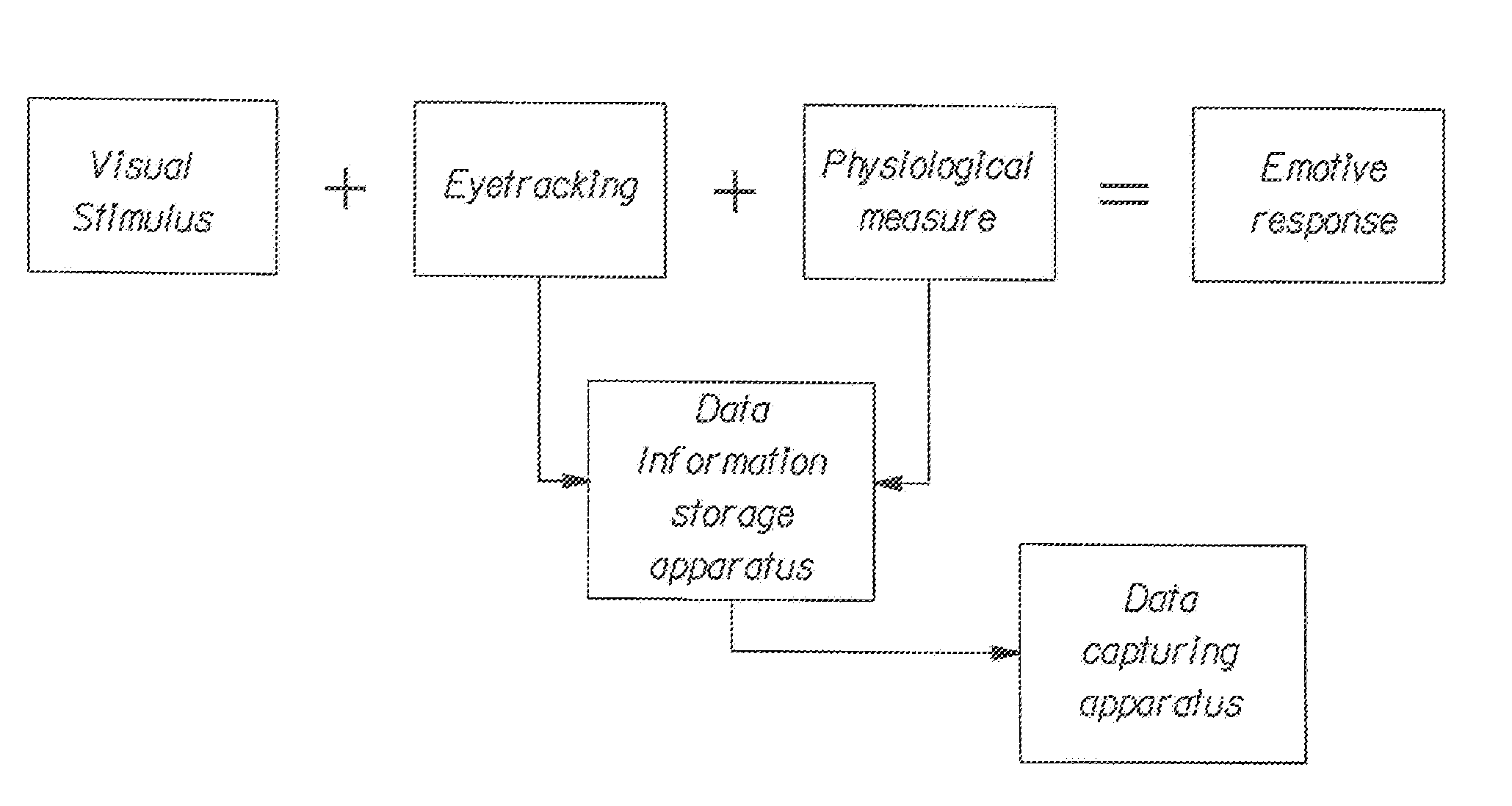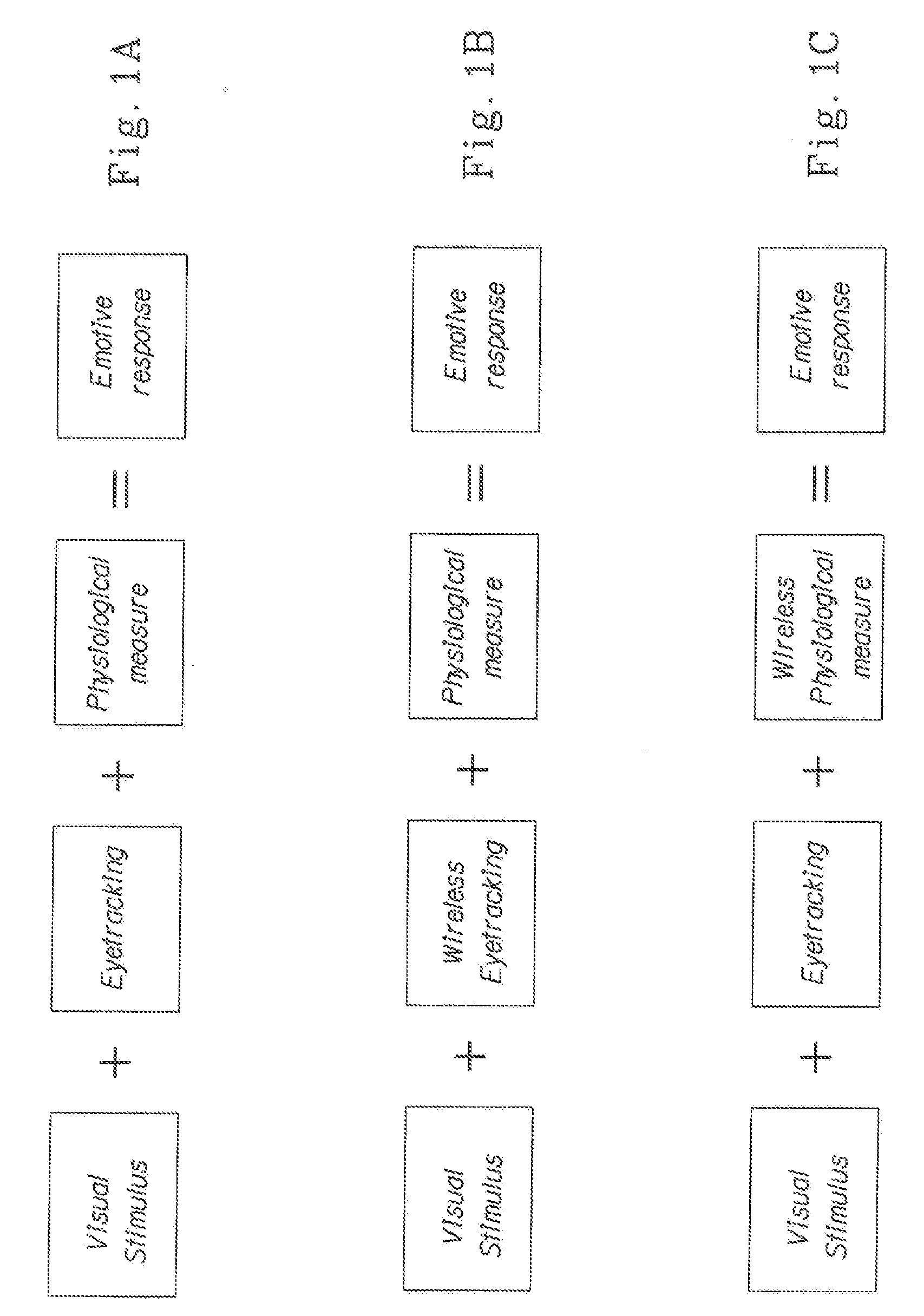Methods for Measuring Emotive Response and Selection Preference
a technology applied in the field of emotive response and selection preference measurement, can solve the problems of inefficiency and inaccurate data obtained from this consumer analysis model, misleading and inaccurate consumer market prediction data, and data obtained from this user analysis model. inefficient, incomplete and/or inaccura
- Summary
- Abstract
- Description
- Claims
- Application Information
AI Technical Summary
Benefits of technology
Problems solved by technology
Method used
Image
Examples
example 1
[0126]A prototype rendering of a proposed magazine advertisement is shown to a consumer. Using available eye-tracking apparatus systems, as illustrated in FIGS. 1A-1E, the noticeability of various elements within the magazine advertisement layout is measured. The consumer's eyepath is overlaid on a copy of the ad image, where both the sequence as well as time spent viewing each element is recorded and displayed. The sponsor of the ad then shows the consumer various ad layouts or elements different from the first ad layout to gauge their reactions. For example, the sponsor may learn that one key graphic receives little notice while another aspect of the ad receives an inordinate amount of attention, both in terms of total time and number of revisits by the consumer's eyes during the test viewing period. In another version of a test, two pages of a simulated magazine may be concurrently shown where one is an ad for the sponsor's product or service and the other is an ad for a competit...
example 2
[0129]As a modification of Example #1, instead of the stimulus being an image of a magazine ad, a virtual rendering of a retail store shelf with different products is displayed. In a manner similar to Example #1, the attention, physiological and derived emotive state data can be determined. Additionally, the probable selection preference of the consumer, for example purchase intent, toward different products that received her attention can be assigned and reported either in real-time or in a post-test report.
example 3
[0130]One non-limiting SMOT example is a consumer changing a diaper on a real or doll baby. Eye-tracking or head position apparatus is employed, while a physiological measure of the mom is collected, such as a digitized voice recording of audio narration provided by the mom during the diaper changing task. Synchronizing data plus employing layered voice analysis yields probable emotive state(s) through the task, including points of frustration and pleasurable execution. Giving the mother a different diaper design, the SMOT data and emotive response profiles from the second diaper can be compared with the first. This allows the company to understand differences between the different diaper designs, and thereby design improved diapers and diapering experiences.
[0131]In diaper changing, two individuals are often involved, one being a baby. The baby's emotive response profile toward the diaper and the diaper changing experience, can be estimated or determined. For a baby, one physiologi...
PUM
 Login to View More
Login to View More Abstract
Description
Claims
Application Information
 Login to View More
Login to View More - R&D
- Intellectual Property
- Life Sciences
- Materials
- Tech Scout
- Unparalleled Data Quality
- Higher Quality Content
- 60% Fewer Hallucinations
Browse by: Latest US Patents, China's latest patents, Technical Efficacy Thesaurus, Application Domain, Technology Topic, Popular Technical Reports.
© 2025 PatSnap. All rights reserved.Legal|Privacy policy|Modern Slavery Act Transparency Statement|Sitemap|About US| Contact US: help@patsnap.com



